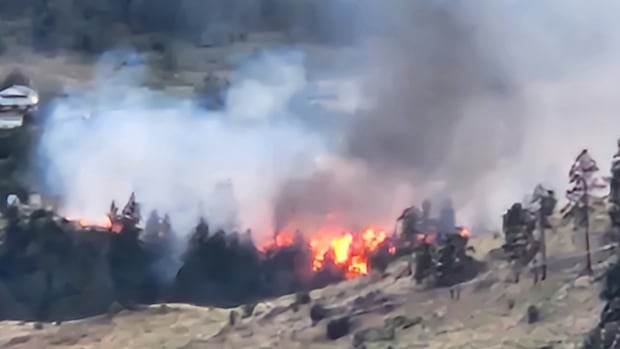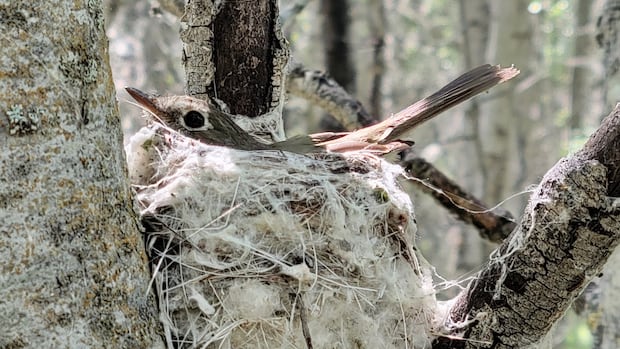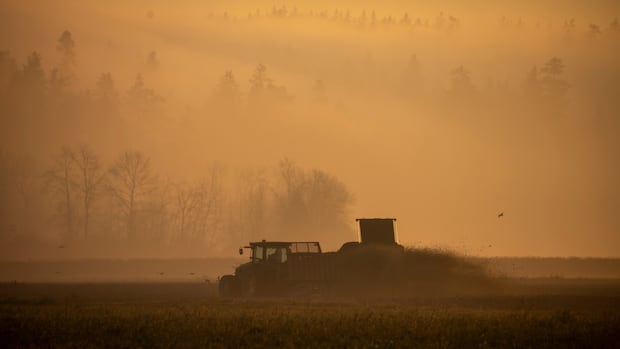A tiny, insect-eating bird that breeds in Alberta is migrating south early, an altered departure time, which researchers say suggests that climate change has forced the species to adapt.
New research on the least flycatcher sheds light on how warming weather patterns have changed the way these birds split their time between their summer habitats in Canada and wintering grounds in Mexico and Central America.
The paper, published last month in The Wilson Journal of Ornithology, is the latest in a growing collection of studies illustrating how climate change has altered the migratory patterns of birds.
The study shows that the adult birds of the flock are heading south earlier in autumn — two weeks sooner than they would have 32 years ago.
The research was done in partnership with the Beaverhill Bird Observatory, the second oldest migration monitoring observatory in Canada.
The observatory, located southeast of Edmonton, has monitored bird populations in the area since the 1980s.
"Because we have three decades of data, we can look to see if there's any changes in that timing," said Geoffrey Holroyd, study co-author, research scientist and chairman of the Beaverhill Bird Observatory.
"And in fact, that's what we found. The adults are now leaving a full two weeks earlier than they did 30 years ago."
Changing patternsThe altered pattern in migration for the least flycatcher serves as a warning about the future of thousands of migratory birds, which travel hundreds or thousands of kilometres on their annual journeys, Holroyd said.
Researchers have already tracked similar migratory changes in other species, including mountain bluebirds and saw-whet owls.
Scientists believe birds take their cue to leave from a variety of factors, including the sunlight, the weather, and the health of their habitat. But as the climate changes, these delicate calculations are interrupted.
When these critical cycles shift, birds risk falling out of sync with the resources they need to survive, Holroyd said.
WATCH | Climate change altering migratory paths for some birds, researchers say: Researchers say they’re seeing the impact of climate change through the changing migratory patterns of birds.Birds that migrate early, for instance, may face deadly storms on their journeys north. Extreme heat during early hatching season may mean its simply too scorching for some young to survive.
Holroyd said researchers believe the least flycatcher may be arriving sooner in the spring, allowing for an earlier departure time.
"We don't fully know why yet," he said.
"Our next step is to explore our 30 years of data and see why. Why are the adults able to leave two weeks earlier? Are they arriving earlier? Are they nesting earlier?"
Holroyd said many questions remain about the viability of bird species under threat from climate change, but the threats are many. It's critical humans reduce their impacts on bird populations, he said.
A bird in handThe Beaverhill study relied on data of more than 7,000 banded birds. The wooded region surrounding the observatory on the southeast edge of Beaverhill Lake serves as a breeding ground for these slight songbirds.
Researchers use large mist nets made of mesh to carefully capture the birds, band their legs and log their weight, size and sex — allowing the observatory to track when birds arrive in spring and leave each fall.
WATCH | Canadian mayors push federal leaders for action on climate: Municipal politicians across Canada have written a letter to the five main federal party leaders urging them to tackle climate change along with economic and security concerns in this election.There have always been timing differences between their departure times for the species but climate change appears to be widening the gap, Holroyd said.
Along with earlier migration, the research also found that adult birds migrated 13 days ahead of young birds that had hatched that year. Adult females, meanwhile, departed south five days earlier than adult males.
The males are sticking around longer to claim a territory while the young likely need more time to hone their insect-hunting skills before heading south, Holroyd said.
The younger are just doddling longer, whereas the adults are clearing out of dodge quickly."- Geoffrey Holroyd"After they finish nesting, the adults leave immediately because they want to get to their wintering ground so they can molt their feathers. But the young are not in a rush," Holroyd said.
"The adults leave here and rush through eastern Canada on the way down south. The younger are just doddling longer, whereas the adults are clearing out of dodge quickly."
The smallest of its kind in eastern North America, the least flycatcher have nests clustered in territories across Canada from the Yukon and Northwest Territories south to the United States border and east to Newfoundland.
The olive and grey birds, with a wingspan no larger than 20 centimetres, are known to sing incessantly through the summer with a trademark che-beck, and hatch their young in nests made of bark, twigs, grass bound with spider webs.
Their populations have shrunk in recent decades. Partners in Flight, which focuses on the conservation of land bird species, classifies the least flycatcher as one in steep decline.
Federal breeding bird surveys have recorded a 54 per cent drop in the population compared to the early 1970s and it's considered a priority species by the North American Bird Conservation Initiative.
'Never been more important'Jeff Skevington, bird researcher and president of the Ontario Field Ornithologists, said the study provides important insight into a perplexing question about the adaptability of bird species under threat.
He said the study should serve as a template for further research. He said observatories like Beaverhill sites are well-equipped to track the complex changes now taking place among so many species in Canada.
"For the data they collected, you have to have the bird in the hand," he said.
He said the scientific community needs to work together, as populations across the continent face steep losses.
"It's probably never been more important, if we're going to stop any of these declines," Skevington said.
"It's the scientific papers like these that really are going to push the envelope on our understanding of how profound these changes are."











